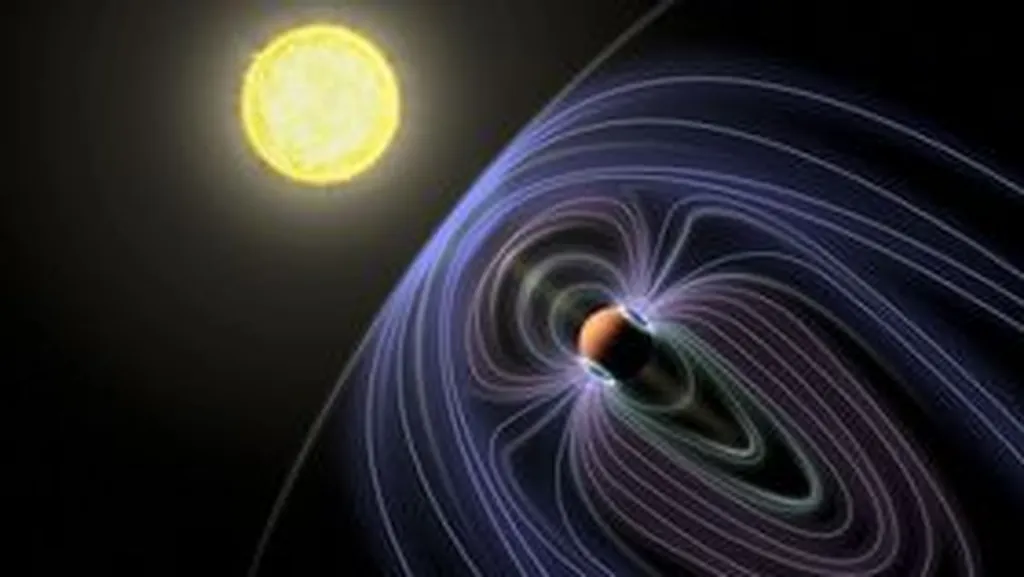In a recent study led by Dag Evensberget from the University of St Andrews and involving researchers from the University of St Andrews, the University of Hamburg, and the University of Sydney, scientists have delved into the intriguing radio signals detected from the τ Boötis star system. The team, which includes Aline A. Vidotto, Filip Elekes, Sandra V. Jeffers, and Rik T. Luisman, has published their findings in the journal Astronomy & Astrophysics.
The research focuses on the radio signals detected from the τ Boötis system, which have been tentatively attributed to auroral emissions from the hot Jupiter exoplanet τ Boötis Ab. These emissions are thought to be triggered by the interaction between the exoplanet and the winds of its host star. To better understand this phenomenon, the researchers created a three-dimensional wind model of the star, τ Boötis A, using spectropolarimetric observations taken at the same time as the radio detections.
The team derived a magnetic map of τ Boötis A, revealing a poloidally dominated field with an average strength of 1.6 G. Using this magnetic map, they developed a three-dimensional numerical wind model to characterize the wind properties around τ Boötis Ab. To estimate the wind power dissipated in the exoplanet’s magnetosphere, the researchers employed two different approaches: an empirical relation called Bode’s law and a resolved numerical model of the planetary magnetosphere. Both methods yielded radio flux densities much lower than the observed signal strength, suggesting that a significantly stronger stellar surface magnetic field would be required to reproduce the observed radio emissions.
The study highlights the importance of contemporaneous observations of stellar magnetism and star-planet interaction signatures. The researchers speculate that variations in the star’s magnetic field, which has a rapid magnetic cycle, could explain the lack of detections in follow-up observations. This work underscores the need for further research in this area to better understand the complex interactions between stars and their planets.
In the context of the energy industry, this research contributes to our understanding of stellar winds and their interactions with exoplanets. While the practical applications for the energy sector may not be immediately apparent, the study’s findings could potentially inform the development of advanced technologies for space-based energy generation or the design of more resilient spacecraft and satellites that can withstand the harsh conditions of space. Additionally, the research highlights the importance of accurate modeling and contemporaneous observations, which are valuable skills and approaches that can be applied to various challenges in the energy sector.
This article is based on research available at arXiv.

